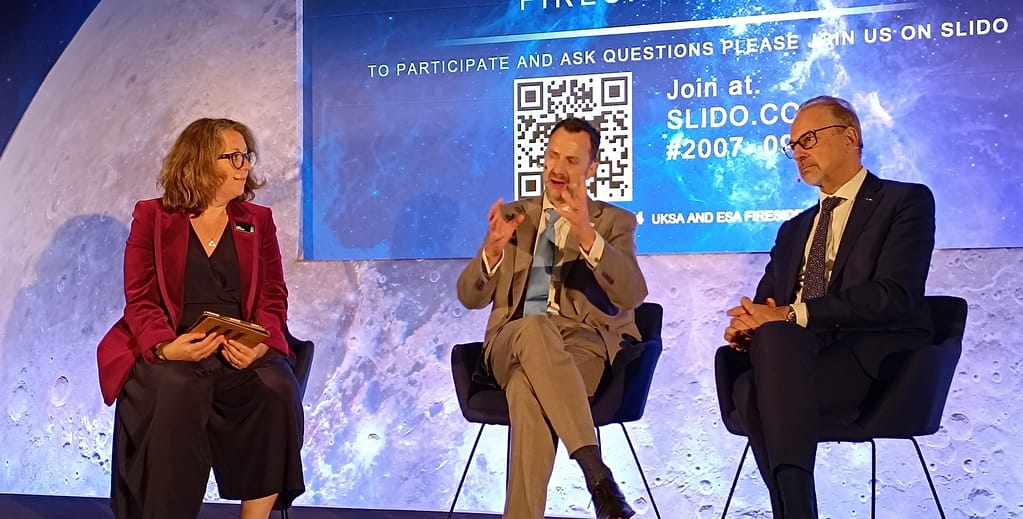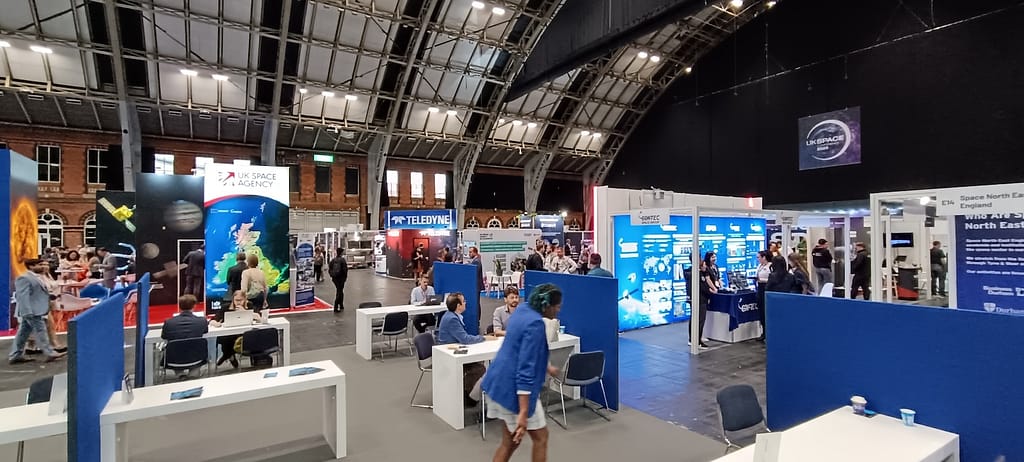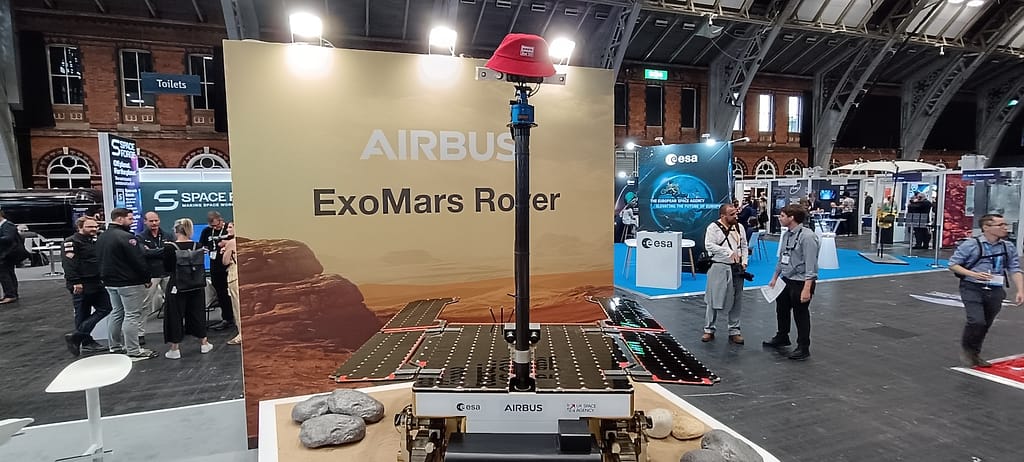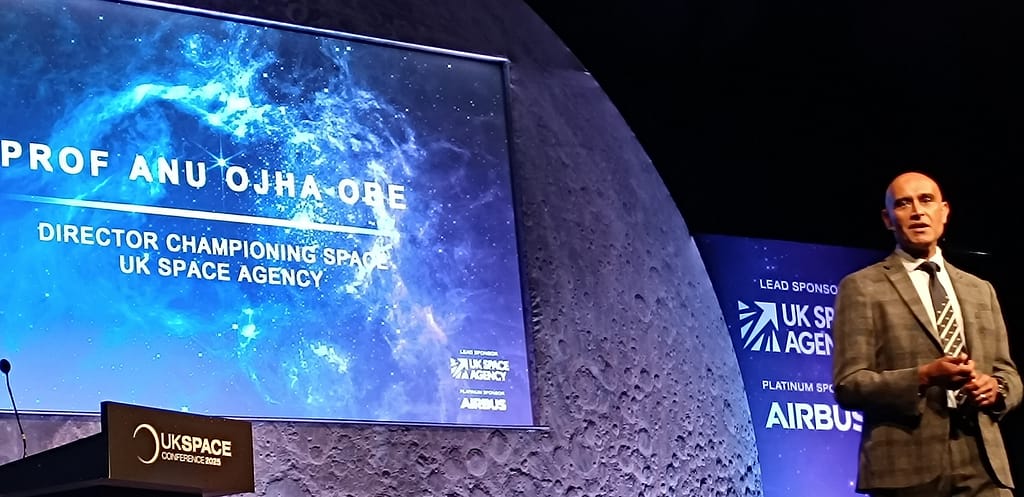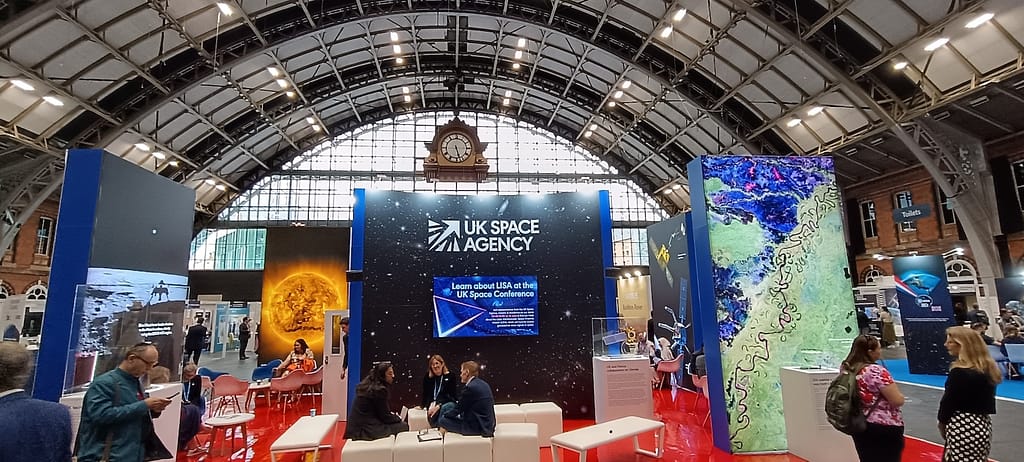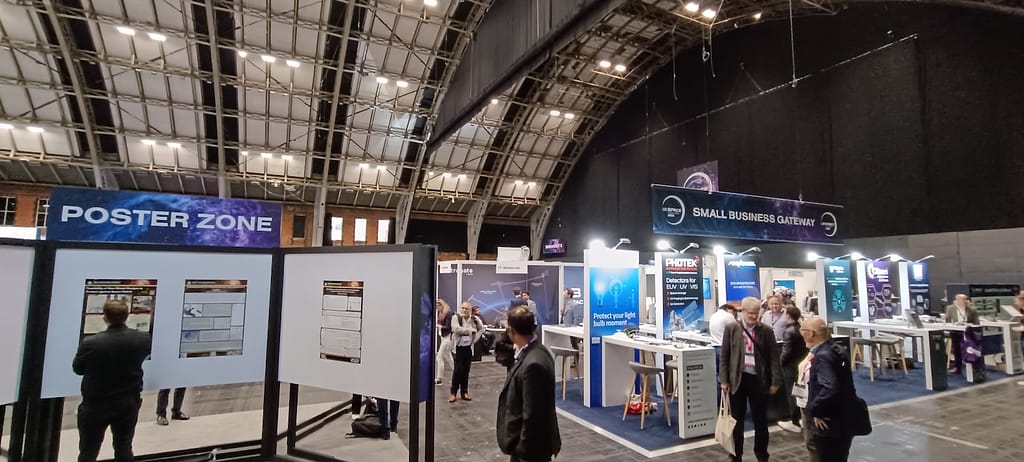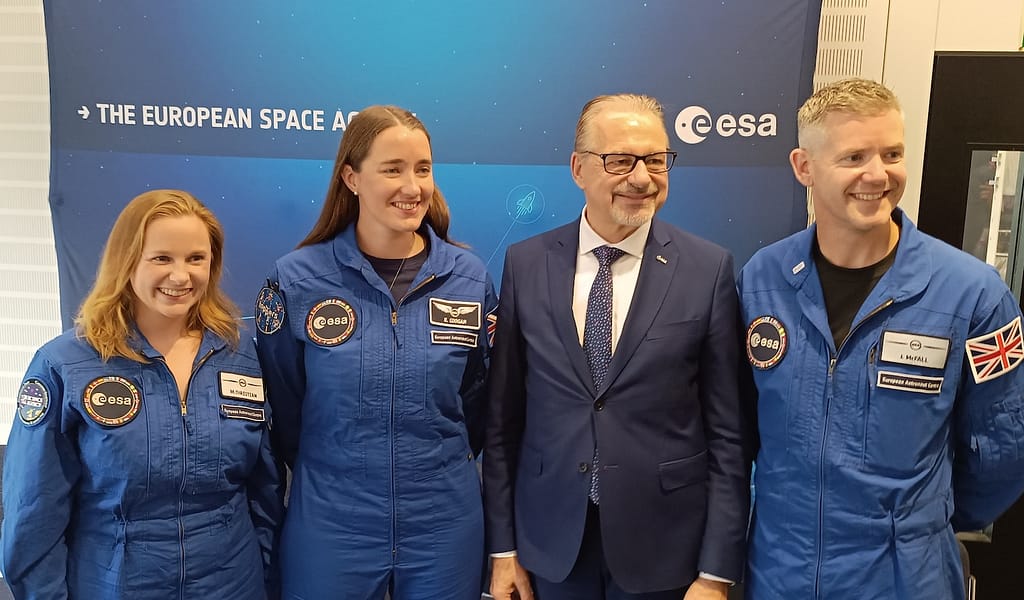
A few notes from the two-day UKspace conference that started today and ends tomorrow. Located in the heart of Manchester – Manchester Central.
Space in UK
UK has around 1900 space-related companies
Accounts for 16% of UK GDP
60 UK universities are involved in space
Space is critical infrastructure. For example, the loss of GPS would result in a daily loss of £1 billion to the UK economy.
International students leave the UK after completing their course. A plea for industry to reach out, do the visa application paperwork and keep those people with critical skills in the UK.
The UK should encourage space professionals disenchanted with the policies in the USA to come and work here in the UK
Anu Ojh acknowledged the origins of what is now the UKSPaceConference in the British Rocketry Oral History Program and the Charterhouse meetups prior to 2010. I remember the hectic and industrious Dave and Leslie Wright, who made that happen.
Professor Anu Ojha, acknowledged the origins of the current UKSpace conference to the Space Conference that came out of the British Rocketry Oral History Programme that ran during the first decade of the 2000.
European Space Agency
The UK is one of the 23 member states.
ESA is a separate organisation from the EU, and the UK’s membership of ESA was not directly impacted by Brexit.
ESA has 600 Workers across 23 member states
The UK’s three recently selected astronauts took questions from the media
Rosemary Coogan, astrophysicist
John McFall, Paralympic sprinter and surgeon
Meganne Christian, a materials scientist and atmospheric physicist
Tim Peake has now retired and is unlikely to return to space. The three new astronauts have yet to be allocated a spaceflight.
During the press conference, ESA Director General Josef Aschbacher was asked about the cost of flying a UK astronaut to space. He did not offer a specific answer. This is consistent with my experience. Costs, budgets, and prices are usually shrouded in uncertainty. This is true for many/most countries, companies and organisations.
ESA is still hoping to launch the UK ExoMars Rover Rosalind Franklin. Airbus is developing the lander, with a planned launch date of 2028. A very ambitious launch date, I think.
A very well-organised event with attendees from across the UK, Europe, and beyond. Attendees included
Josef Achbacher ESA Director General
Paul Bate UK Space Agency CEO
Tomorrow, Manchester Mayor Andy Burnham will attend
https://www.spaceconference.co.uk/


